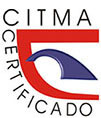Examen de aptitud para candidatos a estudios de interpretación en FLEX
Palabras clave:
interpretación, proceso de interpretación, examen de aptitud, rendimientoResumen
Resumen
Esta investigación pretende explicar por qué ciertas aptitudes son necesarias para lograr un alto rendimiento en interpretación, exponer cómo un examen de aptitud podría beneficiar a FLEX para determinar que estudiantes podrían tener más posibilidades de ser intérpretes exitosos. El nuevo Plan E trae consigo un cambio radical: todos los estudiantes tendrán asignaturas comunes durante los primeros dos años. Luego, tendrían dos opciones: continuar sus estudios en el campo de Traducción-Interpretación o en el de Lingüística. Este trabajo propone un examen de aptitud para evaluar las aptitudes y habilidades necesarias para el éxito en la interpretación.
Descargas
Citas
Age invaders. (n.d.). The Economist, Demography, growth and inequality.
BOWEN, & BOWEN. (1989). Aptitude for interpreting.
CARROLL, J. (1978). Linguistic Abilities in Translators and Interpreters. Language interpretation and communication, 119-129.
CHABASSE, C. AND S. KADER. (2014). Putting interpreting admission exams to the test: The MA KD Germersheim project. Interpreting, 16(1), 19-33. https://doi.org/10.1075/bct.68.09cha
CRONBACH, L., & SNOW, R. (1977). Aptitudes and institutional methods: A handbook for research on interactions. New York: Irvington.
DOMÍNGUEZ, V. (2015, December 3). Aptitudes for interpreters and its importance for FLEX.
HERBERT, J. (1952). The Interpreter’s Handbook: How to Become a Conference Interpreter. Geneva: Librairie de l’Université Georg.
KENNEDY, J. F. (1961 ). Inaugural Address. January 20, 1961. J. Pub. L., 12, 235.
LAMBERT, S. (1991). Aptitude Testing for Simultaneous Interpretation at the University of Ottawa. Ottawa: Meta: journal des traducteurs/Meta: Translators' Journal, 36(4), 586-594.
LANYING, G. (2007). Studies on Interpretation and Interpreters training. Beijing: Science Press. Journal of Language Teaching & Research, 4(6).
LONGLEY, P. (1989). The use of aptitude testing in the selection of students for conference interpretation training. In L. GRAN and J. DODDS.: The theoretical and practical aspects of teaching conference interpretation, 105-108. Udine: Campanotto Editore.
MACNAMARA, B. (2012). Interpreter Cognitive Aptitudes. Journal of Interpretation. Journal of Interpretation, 19(1), 1.
MOSER-MERCER, B. (1994). Bridging the gap: Empirical Research in Simultaneous Interpretation. (Vol. 3). Amsterdam: John Benjamins.
PIPPA, S., & RUSSO, M. (2002). Aptitude for Conference Interpreting. A proposal for a testing methodology based on paraphrase. In G. Garzone and M. Viezzi (eds.) Interpreting in the 21st Century: Challenges and opportunities. Selected papers from the 1st Forlì Conference on Interpreting Studies, 9-11 November 2000. Amsterdam/Philadelphia: Benjamins. pp. 245-256. https://doi.org/10.1075/btl.43.24pip
PÖCHHACKER, F. ( 2011). Assessing aptitude for interpreting: The SynCloze test. Routledge. Interpreting, 13(1), 106-120.
PÖCHHACKER, F. AND M. LIU (eds.) 2014. Aptitude for interpreting. (Vol. 68) Amsterdam: John Benjamins.
RODRÍGUEZ, B. (2018, abril 14). Fragmento del discurso pronunciado . Sesión plenaria de la VIII Cumbre de las Américas. Lima, Perú.
RUSSO, M. (2011). Aptitude testing over the years. Interpreting, 13(1), 5-30. Paper presented at the SSLMIT: University of Bologna.
RUSSO, M. (2014). Testing aptitude for interpreting: The predictive value of oral paraphrasing, with synonyms and coherence as assessment parameters. Interpreting 16(1): 1-18. https://doi.org/10.1075/bct.68.07rus
RUSSO, M., & PIPPA, S. (2004). Aptitude to interpreting: Preliminary results of a
testing methodology based on paraphrase. Translators’ Journal 49(2): 409-432. https://doi.org/10.7202/009367ar
SIMONÉ G. AND HAROLD M. L. (2021). Interpreter training: Devising a model for aptitude testing for simultaneous interpreters. Stellenbosch Papers in Linguistics Plus, Vol. 61.
TIMAROVÁ, Š., & UNGOED-THOMAS, H. (2008). Admission testing for interpreting courses. The Interpreter and Translator Trainer, 2(1), 29-46.
VANHECKE, K. (2008). La interpretación simultánea vista desde una perspectiva cognitiva: Análisis de aptitudes para la interpretación y propuesta metodológica de la enseñanza de la interpretación en España. University of Malaga.
Descargas
Publicado
Cómo citar
Número
Sección
Licencia
Derechos de autor 2022 Elena Díaz González

Esta obra está bajo una licencia internacional Creative Commons Atribución-NoComercial 4.0.
Usted es libre de:
Compartir — copiar y redistribuir el material en cualquier medio o formato
Adaptar — remezclar, transformar y construir a partir del material
La licenciante no puede revocar estas libertades en tanto usted siga los términos de la licencia
Bajo los siguientes términos:
Usted es libre de:
Atribución — Usted debe dar crédito de manera adecuada, brindar un enlace a la licencia, e indicar si se han realizado cambios. Puede hacerlo en cualquier forma razonable, pero no de forma tal que sugiera que usted o su uso tienen el apoyo de la licenciante.
NoComercial — Usted no puede hacer uso del material con propósitos comerciales.
No hay restricciones adicionales — No puede aplicar términos legales ni medidas tecnológicas que restrinjan legalmente a otras a hacer cualquier uso permitido por la licencia.












